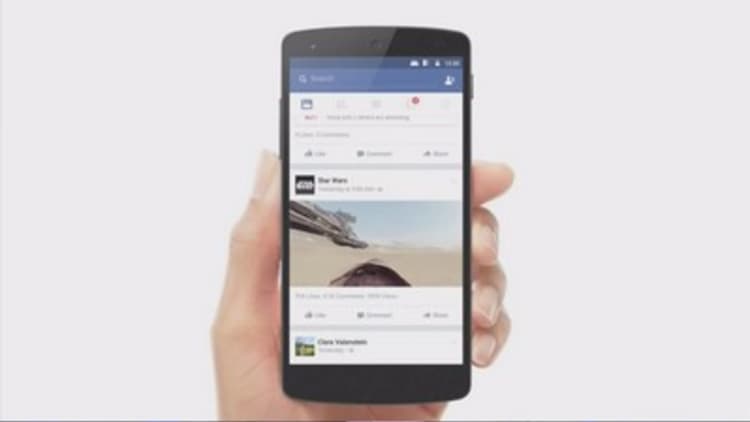
Google has played down the challenge posed to its YouTube business by Facebook's aggressive push into online video, with the U.S. search giant's U.K. head telling CNBC it is "comfortable" with its position when it comes to generating advertising revenue.
Facebook has been making major moves in the video space to capture lucrative ad dollars. On Tuesday, the social networking giant announced it was testing a dedicated video feed where users can scroll through and discover new content. It also introduced a feature which lets celebrities live stream content onto the platform and announced a model where it is offering to split revenues gained from adverts sold around original content producers' videos.
The Facebook move was designed to attract more original content creators -- the main contributing factor to YouTube's success.
‘Comfortable’ with competition
But Google, which owns the video site, said it's not worried by its rival's steps, citing Facebook's method of charging advertisers even if user watches a video for just three seconds.
"Facebook is a three second view and you're charged. It's a very different proposition for an advertiser and very different impact on brand recall awareness," Eileen Naughton, managing director for Google U.K. and Ireland told CNBC.
"So we are very comfortable, we send a lot of videos over to Facebook, Facebook users share YouTube videos, we get a lot of traffic back and forth and that's a good thing."
Naughton added that Facebook is an "important social network" but YouTube is the "native home for video" and is more a "distribution platform for content creators".
However, Facebook is adapting its video project -- introducing a new feature that lets advertisers pay per impression or pay when a viewer watches an ad for 10 seconds instead. Earlier this year, it showed off a prototype of a product that could see users able to interact with ads.
But Google has also been tightening up its ad products in a bid to make it more attractive to buyers, particularly the way that advertisers are able to track metrics and engagement with audience. A feature called True View allows advertisers to only pay when a user watches the whole advert or 30 seconds – whichever comes first.
"That has brought a whole lot more efficiency. It means consumers who are not interested are closing down that ad, but interestingly we have a very high click through rate, or view through rate on those ads because we use a lot of signals to have a relevant contextual place for those ads," Naughton said.



